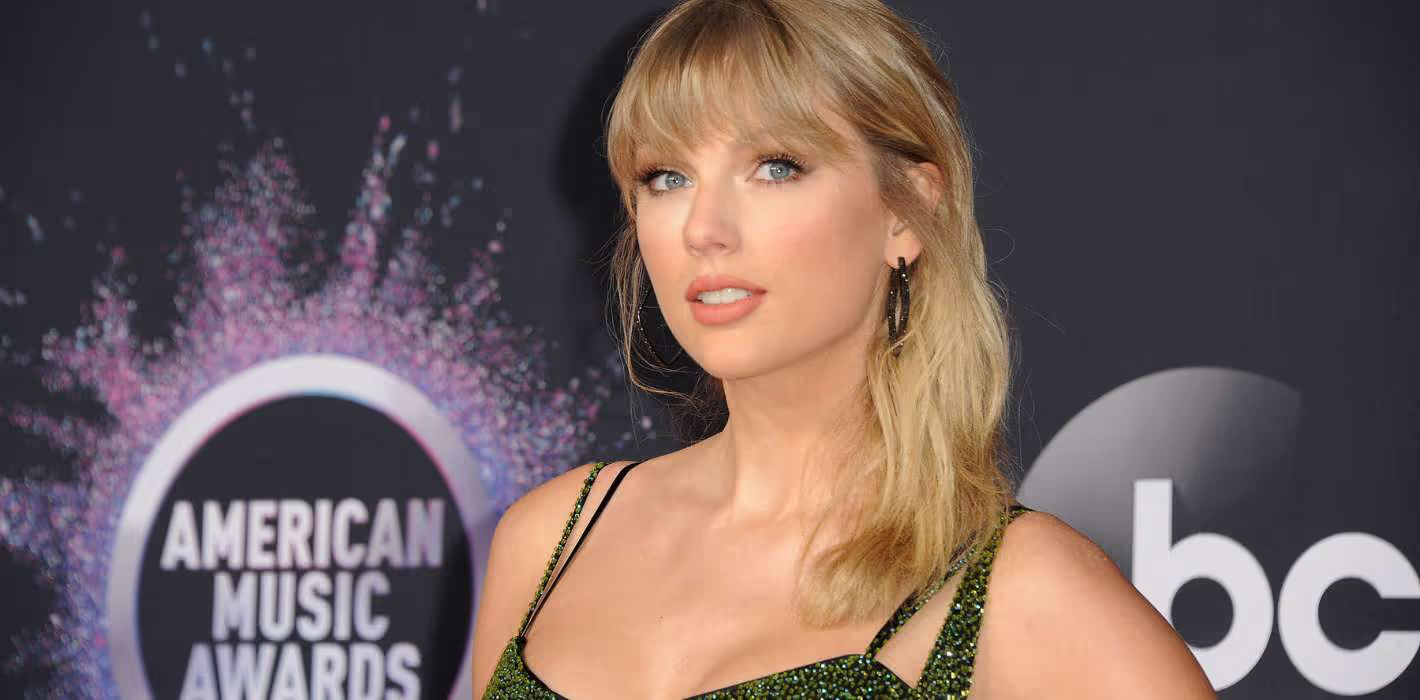%20(15)%20(1).png)
- Taylor Swift’s lyrics are now being studied in classrooms for their literary depth and emotional resonance.
- Her storytelling, use of metaphor, and relatable themes connect deeply with Gen Z, elevating her work beyond pop music.
- Swift’s songwriting is seen as modern poetry, with educators using it to teach narrative structure and literary devices.
Taylor Swift. A global pop sensation, sure, but in recent years, she’s also becoming something else—required reading in classrooms. High school and college English professors are using her lyrics to teach everything from narrative structure to emotional depth. Swift's transition from pop star to literary figure raises the question: how did she go from Billboard charts to English lit syllabi?
Her ability to write lyrics that resonate beyond catchy hooks is what sets her apart. Taylor Swift’s words, often masked in emotional vulnerability, bring a literary quality to pop music that’s rare. It’s no surprise that her lyrics are being treated as modern poetry, as they speak to universal experiences—love, heartbreak, self-discovery—all while packing in layers of narrative complexity that leave listeners, and now students, wanting more.

Storytelling Genius: More Than Just a Pop Star
Swift’s music has always had a narrative drive, but it’s her lyrical prowess that truly shines. Take “All Too Well,” for example. A song initially tucked away in Red (2012) that has since grown into a fan-favorite anthem, it’s now studied for its vivid imagery and gut-wrenching details. The song unravels like a short story, filled with a beginning, middle, and heart-crushing end.
Lines like, “You call me up again just to break me like a promise, so casually cruel in the name of being honest,” capture the complexity of a relationship’s breakdown in a way that feels deeply personal yet universally relatable. It’s no wonder educators are turning to her work to illustrate themes like betrayal, emotional trauma, and memory—all things we see explored in literature but rarely in pop songs.
Even more interesting is how Swift plays with time, moving between past and present seamlessly, much like a novelist would in a reflective piece. These literary devices—flashbacks, symbolism, emotional arc—are key reasons why All Too Well and other Swift classics are discussed alongside canonical works in English classes.
Relatability on a Gen Z Level
Gen Z connects with Taylor Swift on a level that goes beyond fandom. Her lyrics touch on themes that this generation grapples with daily: identity, mental health, love, and the complex layers of social media-fueled self-perception. Songs like “mirrorball” from Folklore are perfect examples. In it, Swift uses the metaphor of a disco ball reflecting the expectations of others to capture the feeling of always having to perform, an anxiety many young people today understand all too well.
As one student explained during a classroom discussion of the song, “It’s like she’s saying that being yourself isn’t enough anymore. You have to be what people want you to be, or else you break.” That’s the kind of reflection that goes beyond surface-level enjoyment of a pop song—it invites introspection, just like classic works of literature do.
A New Approach to Teaching Literary Techniques
Beyond the emotional resonance, Swift’s lyrics are now being dissected for their technical elements—metaphor, symbolism, and narrative structure. English professors are using songs like “Cardigan” and “The Last Great American Dynasty” to teach students how to identify and interpret literary devices.
“Cardigan,” for example, uses a worn, familiar sweater as a symbol for comfort and nostalgia, while "The Last Great American Dynasty" is a narrative masterpiece, weaving the history of Rebekah Harkness into Swift’s own story, blurring the lines between biography and fiction. Students are tasked with breaking down these symbols, exploring how Swift creates meaning and depth with such simple, everyday images.
It’s not just about understanding the lyrics themselves, though—it’s about understanding what those lyrics say about the world around us. Just as Shakespeare used metaphor to critique power or Fitzgerald used symbolism to dissect the American Dream, Swift uses everyday items—a scarf, a cardigan, a mirrorball—to explore universal human themes.
Music as Modern Poetry
Taylor Swift’s work is also being treated as poetry in many classrooms. English professors are quick to point out how her lyricism—particularly in albums like Folklore and Evermore—transcends typical pop music boundaries.
In “The Archer,” Swift sings, “Who could ever leave me, darling, but who could stay?” A simple question, but one loaded with meaning. It’s this kind of vulnerability and reflection that mirrors the works of poets like Sylvia Plath and Emily Dickinson—poets who explored their inner worlds with honesty and precision.
Swift’s lyrics ask big questions, often with quiet subtlety, and those questions are the same ones literature students have been asking for generations. Love, loss, identity, self-worth—these are the timeless topics that make Swift’s songs feel like modern-day poetry.
Why It Matters
The rise of Taylor Swift in academic spaces signals a broader cultural shift, one that acknowledges the value of contemporary art forms as legitimate sources of literary study. It’s a recognition that lyrics, especially those as rich as Swift’s, can offer as much insight into the human experience as a poem by Robert Frost or a novel by Virginia Woolf.
Swift has managed to transcend the “pop star” label, crafting lyrics that demand closer inspection and beg to be re-read, much like a beloved book on a rainy day. Her music speaks not only to a generation but also to the timeless complexities of being human. And that’s exactly why Taylor Swift is now being taught in classrooms—because her lyrics, like all great literature, make us think, feel, and question.
#TaylorSwift #ModernLiterature #SongwritingGenius #PopMusic #GenZCulture #MusicAndEmotion #Swifties #Folklore





